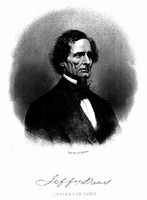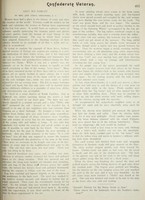Over the Half-Century Following the Civil War
Over the half-century following the Civil War, a new memory shaped by Lost Cause rhetoric emerged and solidified within the public discourse. This narrative challenged the memory of the war as a symbol of Black Liberation, Emancipation, and a Second Founding of the nation. By the turn of the nineteenth century, Blight claims, "romance triumphed over reality, sentimental remembrance won over ideological memory," and "over time, Americans have needed deflections from the deeper meanings of the Civil War. It haunts us still; we feel it… but often do not face it" (Blight, 4). As evidence of the success of the Lost Cause narrative, in 1915, President Woodrow Wilson screened The Birth of Nation in the White House. The film signaled the end of emancipatory and a slavery-centric justification for the war; instead, the Lost Cause narrative came to dominate mainstream understandings of the war, a legacy Americans contend with to this day.
This newly imagined and constructed "memory" of the war as one of Northern aggression and Southern defense was particularly strong in the former Confederate states. It minimized and obfuscated national justifications for war by glorifying the 'cult of the fallen soldier.' In doing so, it sentimentalized the war and fervently asserted that the Confederacy fought for a righteous political and religious cause only to be defeated by the North's superior industrial wealth. Likewise, it transformed the antebellum South from a place of enslaved brutality towards one of lost romance, where the enslaved and enslaver had lived in an idealistic paternal relationship, dismissing the horrors of slavery—turning the enslaver into a father figure and moral compass for the people they enslaved. This paternal-romantic narrative is the foundation of the Lost Cause mythology and is ideologically based on white supremacy.

